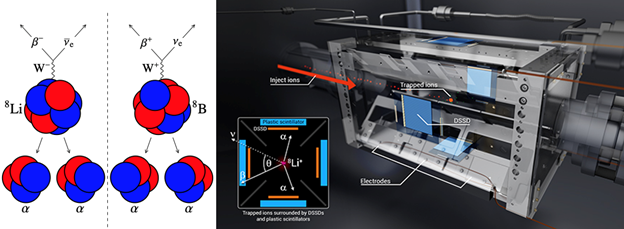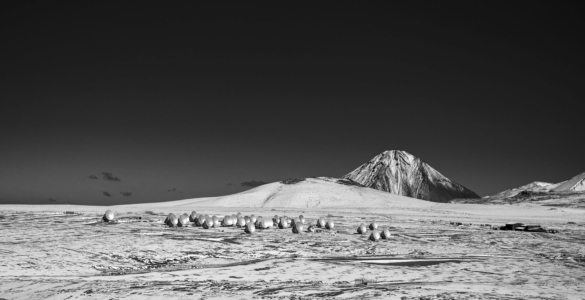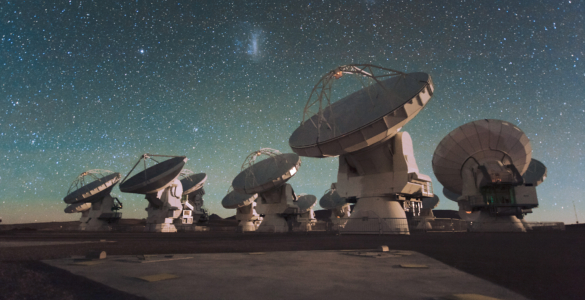NIH scientists find clinicians still rely often on older and toxic medicines.
Latest News
New Beta-Decay Measurements in Mirror Nuclei Pin Down the Weak Nuclear Force
Scientists develop a new method to characterize the properties of one of the four fundamental forces of nature.
The many-body dynamics of cold atoms and cross-country running
Senior Olivia Rosenstein balances cross-country competitions with research in quantum gasses and early-universe radio wave signals.
To build a better AI helper, start by modeling the irrational behavior of humans
A new technique can be used to predict the actions of human or AI agents who behave suboptimally while working toward unknown goals.
Study uncovers neural mechanisms underlying foraging behavior in freely moving animals
Rice neuroscientist Valentin Dragoi and team shed light on what happens in the brain of freely-moving macaques engaged in foraging behavior.
Older adults in Ohio are among the most vulnerable to extreme weather
Nearly 1 in 5 older adults in central Ohio report not being prepared for emergencies, such as extreme weather events, or not knowing if they are ready. That is concerning because research shows older adults are at greater risk of harm during disasters such as extreme weather events.
University of Tennessee chancellor calls on land-grant universities to lead
Plowman, chancellor of the University of Tennessee, Knoxville, has led the state’s flagship land-grant research university since 2019. She was the guest speaker Thursday for the 2024 James F. Patterson Land-Grant University Lecture at The Ohio State University
Protecting ALMA’s Skies
The Atacama Large Millimeter/submillimeter Array (ALMA), renowned for observing the cosmos’s darkest and most distant corners, has taken a step to ensure its observations remain unaffected by human-made interference.
At the heart of ALMA’s exceptional capabilities lies its extensive frequency range, spanning from 35 GHz to 950 GHz in ten distinct frequency bands. This comprehensive range is vital for ALMA’s mission to unlock the Universe’s secrets. However, it also exposes the observatory to potential RFI from both terrestrial and space-based sources.
A recently concluded study, led by senior radio frequency (RF) engineer and Spectrum Manager Giorgio Siringo, alongside ALMA Director Sean Dougherty, presents an extensive analysis of the current and future challenges of radio frequency interference (RFI) to ALMA’s operations. This white paper, “ALMA Spectrum and Radio Frequency Interference,” meticulously identifies vulnerabilities from sources of interference and proposes robust mitigation measures to safeguard ALMA’s valuable observations.
The ALMA Spectrum Management Office is collaborating in Chile with the Radio Sub-Committee of the Light Pollution Working Group of the Chilean Astronomical Society (SoChiAs) and the Chilean Low-Earth Orbit Satellites Group (CLEOsat), internationally with the Centre for the Protection of the Dark and Quiet Sky from Satellite Constellation Interference (CPS) of the International Astronomical Union (IAU), with the National Radio Dynamic Zones (NRDZ) initiative of the National Radio Astronomy Observatory (NRAO) of the USA, and with the Committee on Radio Astronomy Frequencies (CRAF) of the European Science Foundation (ESF), and participating in the preparatory meetings for the WRC-27 of the International Telecommunication Union (ITU).
Read more at the Joint ALMA Observatory website.
The post Protecting ALMA’s Skies appeared first on National Radio Astronomy Observatory.
ALMA Reveals Jupiter’s Moon Io has been Volcanically Active for Billions of Years
Jupiter’s moon Io is the most volcanically active place in the solar system. During its 1.8-day orbit, this moon is gravitationally squeezed by Jupiter, leading to volcanic eruptions larger than any on Earth today.
Io, Europa, and Ganymede are in an orbital configuration known as a Laplace resonance: for every orbit of Ganymede (the farthest of the three from Jupiter), Europa completes exactly two orbits, and Io completes exactly four. In this configuration, the moons pull on each other gravitationally in such a way that they are forced into elliptical, rather than round, orbits. Such orbits allow Jupiter’s gravity to heat the moons’ interiors, causing Io’s volcanism and adding heat to the subsurface liquid ocean on icy Europa.
How long has Io been experiencing volcanic upheaval? In other words, how long have Jupiter’s moons been in this configuration?
To discover the answer, researchers utilized the ALMA (Atacama Large Millimeter/submillimeter Array) telescope in Chile—a telescope that is itself surrounded by volcanoes—to measure sulfur isotopes on Io.
Read the full press release from Caltech.
The post ALMA Reveals Jupiter’s Moon Io has been Volcanically Active for Billions of Years appeared first on National Radio Astronomy Observatory.
NIH modifies application and review process for fellowship grants to broaden scientific trainee pool
Fellowship training awards are a critical part of the development of the biomedical research workforce.











